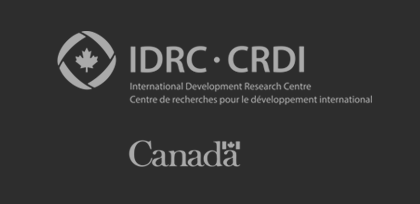OWSD NIGERIA NATIONAL CHAPTER PRESENTS UNDERSTANDING MANUSCRIPT ORGANIZATION
February 10, 2023
OWSD Nigeria National Chapter University of PortHarcourt Branch Series of Scientific Communications: Felix Emeka Anyiam on Understanding Manuscript Organization
UNDERSTANDING MANUSCRIPT ORGANIZATION
By
Felix Emeka Anyiam
Preamble
When it comes to research manuscripts, it is essential that the information is presented clearly and organized. One way to achieve this is by structuring the manuscript into different sections, each with a specific purpose. The most common sections found in research manuscripts are the title, abstract, introduction, methods, results, discussion, and references.
Title of the manuscript
This is often the first thing that readers will see, and it should be clear and concise, accurately reflecting the manuscript's content. The title should be brief yet informative and grab the reader's attention.
The title of a research manuscript is one of the essential elements of the paper. It is often the first thing that readers will see, and it should be clear and concise, accurately reflecting the manuscript's content. A good title should be brief yet informative and grab the reader's attention.
The title should clearly and concisely convey the manuscript's main topic or research question. It should be specific enough to let the reader know what the paper is about but not so specific that it gives away the results. It should also be general enough to be relevant to a wide range of readers within the field.
The title should also be attention-grabbing and memorable. It should be written to make the reader want to read the manuscript and be easy to remember. This is particularly important for papers that are published in journals, as the title will be listed in online databases and search engines, where a wide range may see it of readers.
The title should be written in a style that is consistent with the journal or publication for which the manuscript is intended. This may involve following specific guidelines for capitalization, punctuation, and formatting. The title should also be written in proper English and should be free of spelling and grammatical errors.
Choosing a unique title that is not similar to other published papers is also essential. A similar title could confuse readers and make it harder for the paper to be found through search engines.
In summary, the title of a research manuscript is an essential element of the paper. It should be clear, concise, and informative while also being attention-grabbing and memorable. It should be written in a style that is consistent with the journal or publication and should be unique to avoid confusion with other papers. A well-crafted title can help increase the research's visibility and impact.
Abstract of the Manuscript
The abstract of a research manuscript is a summary of the paper's main findings and conclusions. It should be written in a way that is easy to understand for readers outside of the field and should be no more than 250-300 words. The abstract should provide a clear and concise overview of the research problem, methods, results, and conclusions.
The abstract is typically the second section of a research manuscript and is often the only part of the paper that readers will read. As such, it is essential that the abstract is well-written and accurately reflects the paper's content.
The abstract should begin by introducing the research problem and explaining the significance of the study. It should then provide a brief overview of the methods used in the research, including the study design, participants, and data collection and analysis.
The abstract should then present the study's main findings clearly and concisely. It should not include any data or figures but should instead summarize the key results in a way that is easy to understand.
The abstract should then conclude by summarizing the study's main conclusions and discussing the implications of the findings. It should also note any limitations of the study and suggest directions for future research.
It is important to note that the abstract should be written in a style that is consistent with the journal or publication for which the manuscript is intended. It should also be written in proper English and should be free of spelling and grammatical errors.
In summary, the abstract of a research manuscript is a brief summary of the paper's main findings and conclusions. It should be well-written and accurately reflect the content of the paper. The abstract should provide a clear and concise overview of the research problem, methods, results, and conclusions and should be written in a style that is consistent with the journal or publication. A well-written abstract can help increase the research's visibility and impact by making it more accessible to a wide range of readers.
The introductory section of a Manuscript
The introduction of a research manuscript is where the research problem is introduced and the significance of the study is explained. This section should provide background information on the topic and a general overview of the research question. The introduction should also explain why the research is important and how it contributes to the field.
The introduction should begin with a general statement on the topic, providing context and background information that will help the reader understand the research problem. This could include a brief overview of the current state of knowledge in the field and any related research that has been conducted.
Next, the research question or problem should be clearly stated. The introduction should explain the purpose of the study and why it is important to investigate the research question. This should include a discussion of the significance of the study and how it will contribute to the field.
The introduction should also provide an overview of the methods that will be used in the study, and explain how the research will be conducted. This should include a brief overview of the study design, participants, and data collection and analysis methods.
It is also important to include any relevant controversies or disagreements in the field, highlighting any research gaps. This can help establish the study's significance and show how the research addresses these gaps in the literature.
Finally, the introduction should conclude with a clear statement of the overall aim of the work, and a brief overview of the structure of the manuscript. This should provide a roadmap for the reader, making it clear what the paper will cover and what the reader can expect to learn from it.
It is important to note that the introduction should be written in a style that is consistent with the journal or publication for which the manuscript is intended. It should also be written in proper English and should be free of spelling and grammatical errors.
In summary, the introduction of a research manuscript is a crucial section that provides background information on the topic and a general overview of the research question. It explains the significance of the study, how it will contribute to the field, and provides an overview of the methods that will be used in the study. It also highlights any relevant controversies or disagreements in the field and gives a clear statement of the overall aim of the work. A well-written introduction sets the stage for the rest of the manuscript and helps establish the research's importance and relevance.
Methodology section of the Manuscript
The methodology section of a research manuscript is an essential part of the paper, providing detailed information on the methods used in the study. This section should be detailed enough for other researchers to replicate the study.
The methodology section should begin by describing the study design, including the type of study (e.g., experimental, observational, etc.) and the research design (e.g., cross-sectional, case-control, etc.). It should also explain the rationale for the design choice and how it relates to the research question.
Next, the methodology section should provide detailed information on the participants. This should include the inclusion and exclusion criteria, the sample size, and the recruitment methods. The section should also explain how the sample was selected and how the sample size was determined.
The methodology section should then provide a detailed description of the data collection methods, including the instruments used, the data collection procedures, and any training or calibration of the personnel involved. It should also explain how the data were collected and how the quality of the data was ensured.
The methodology section should then describe the data analysis methods. This should include a description of the statistical methods used, the software used for the analysis, and how the data were processed. It should also explain how the data were cleaned and how missing data were handled.
The methodology section should also include a description of the ethical considerations and measures taken to protect the participants' rights and confidentiality. It should also mention any potential limitations and any steps taken to minimize them.
It is important to note that the methodology section should be written in a style that is consistent with the journal
Result section of the Manuscript
The results section of the research manuscript presents the study findings. The results should be presented in a logical and organized manner and should be accompanied by appropriate tables, figures, and/or illustrations. The results section should provide a clear and concise summary of the study's key findings, without interpreting or drawing conclusions from the data.
The results section should begin with a brief overview of the key findings, highlighting the most important and relevant results. This overview should be written in a way that is easy to understand for readers outside of the field and should be no more than a few sentences.
The main body of the results section should then present the findings in a logical and organized manner, starting with the most important and relevant results. The results should be presented using tables, figures, and/or illustrations, as appropriate. These should be clearly labeled, captioned, and easy to understand.
The results should be presented in a way that is consistent with the research question and the methods used in the study. They should also be presented in a way that is consistent with the journal or publication for which the manuscript is intended.
It is important to note that the results section should not include any discussion or interpretation of the data. These should be left for the discussion section of the manuscript. The results section should also be free of spelling and grammatical errors.
Discussion section of the Manuscript
The discussion section of a research manuscript is where the results of the study are interpreted and connected to the literature review and the research question. It should explain the significance of the findings, their implications, and any limitations of the study. It should also provide suggestions for future research.
The discussion section should begin with a brief summary of the study's main findings, highlighting the most important and relevant results. This summary should be written in a way that is easy to understand for readers outside of the field and should be no more than a few sentences.
The main body of the discussion section should then provide an in-depth interpretation of the results, connecting them to the literature review and the research question. This should include a discussion of the implications of the findings and how they contribute to the field.
The discussion section should also address any limitations of the study. This should include an honest assessment of the strengths and weaknesses of the study, and any potential sources of bias or error. It should also explain how these limitations may have affected the results and what steps could be taken to address them in future research.
The discussion section should also provide suggestions for future research. This could include suggestions for further studies that could be conducted to build on the findings of the current study, or for ways in which the current study could be extended or replicated.
The Manuscript References
Finally, the references section lists all the sources cited in the manuscript. It should be in the format specified by the journal or the publication.
Concluding Remark
Overall, the title, abstract, and introduction are the first three sections of a research manuscript and provide an overview of the content of the manuscript. They should be well-written, informative, and easy to understand. These sections guide the reader to understand the purpose of the research and the main findings.
Bibliography
Behzadi, P., & Gajdács, M. (2021). Writing a strong scientific paper in medicine and the biomedical sciences: a checklist and recommendations for early career researchers. Biologia futura, 72(4), 395-407.
Bahadoran, Z., Mirmiran, P., Kashfi, K., & Ghasemi, A. (2019). The principles of biomedical scientific writing. International Journal of Endocrinology and Metabolism, 17(4).
Bianchi, L. M., & Jeffrey, R. Medical Writing:: Journal Research Articles. In Research during Medical Residency (pp. 171-192). CRC Press.
El Sakran, T., Nunn, R., & Adamson, J. (2019). A genre analysis of the schematic structure and linguistic features of reviewers’ reports on research manuscripts. Asian ESP Journal, 15(3), 7-55.
Forero, D. A., Lopez-Leon, S., & Perry, G. (2020). A brief guide to the science and art of writing manuscripts in biomedicine. Journal of Translational Medicine, 18(1), 1-8.
Richardson, S. M., Bella, F., Mougel, V., & Milić, J. V. (2021). Scientific writing and publishing for early-career researchers from the perspective of young chemists. Journal of Materials Chemistry A, 9(35), 18674-18680.
Contact
Mr. Felix Anyiam
Centre for Health and Development | University of Port Harcourt |Top Floor | Medical Library Building | University of Port Harcourt Teaching Hospital (UPTH)| Port Harcourt | Nigeria
felix.anyiam@uniport.edu.ng [Institutional]
felix.emeka.anyiam@gmail.com [Personal]
http://orcid.org/0000-0003-2774-7406
www.linkedin.com/in/felix-emeka-anyiam-mph-mscph-datasc-phd-in-view-283b307
http://africanscientists.africa/business-directory/anyiam/











































